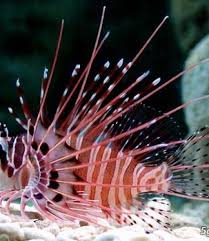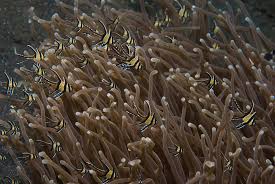Dragons (lóng, 龙) have played a central role in Chinese culture, mythology, and history for thousands of years. Their image has evolved over time, reflecting shifts in society, politics, philosophy, and artistic expression. From being celestial deities and imperial symbols to representations of national identity and modern cultural elements, the role of dragons in China has constantly adapted to the changing times.
This article explores the transformation of dragons in different historical periods, from ancient mythology to their representation in the modern era.
1. Dragons in Ancient China: Mythological and Religious Beginnings
1.1. The Origins of Dragons in Chinese Mythology
The earliest depictions of dragons in Chinese history date back over 5,000 years. Archaeological findings from the Hongshan Culture (4700–2900 BCE) and the Liangzhu Culture (3300–2300 BCE) suggest that early Chinese societies revered dragon-like figures. These primitive dragon representations were often associated with fertility, agriculture, and celestial power.
Key beliefs about dragons in ancient mythology include:
- Dragons as Water Deities: Ancient Chinese people believed that dragons controlled rivers, rain, and weather patterns. They were often worshipped in times of drought or floods.
- The Cosmic Dragon: According to mythology, dragons existed in the heavens, on the earth, and in the sea, making them mediators between different realms.
- The Nine Dragon Sons: Chinese folklore describes nine distinct dragon sons, each with different temperaments and functions, influencing various cultural traditions.
1.2. Dragons in Daoism and Early Chinese Religion
In Daoist traditions, dragons were seen as celestial creatures with divine wisdom. They symbolized the balance of Yin and Yang, representing harmony in the natural order. Unlike Western dragon mythology, which often depicts dragons as monsters, Chinese dragons were seen as benevolent forces that promoted peace and stability.
During the early dynasties, people performed dragon-related rituals and sacrifices to ensure prosperity, especially in agrarian communities that depended on seasonal rains.
2. Dragons in the Imperial Era: Symbols of Power and Authority
2.1. The Dragon as the Emperor’s Emblem
The Han Dynasty (206 BCE–220 CE) marked a turning point in the representation of dragons. The dragon became the official symbol of the emperor and the imperial family, signifying absolute authority and the “Mandate of Heaven” (Tiānmìng, 天命).
- The Five-Clawed Dragon: During the Tang (618–907 CE) and Ming (1368–1644 CE) Dynasties, only the emperor was allowed to use the five-clawed dragon in clothing, banners, and palace decorations. Nobles and officials were limited to using four- or three-clawed dragons.
- The Imperial Dragon Throne: The emperor’s throne was often referred to as “The Dragon Throne,” reinforcing his divine right to rule.
- Dragon Robes and Palace Decorations: The presence of dragon motifs in palaces, temples, and even on the emperor’s robes symbolized strength, wisdom, and longevity.
2.2. The Role of Dragons in Military and Political Strategies
During times of war, dragons were often associated with military strategy and leadership. Famous generals and strategists used dragon-themed banners and weapons to inspire troops and instill fear in enemies.
- Zhao Yun, a famous general during the Three Kingdoms period (220–280 CE), was often compared to a dragon for his unmatched courage and tactics.
- Naval warfare strategies in the Song Dynasty (960–1279 CE) incorporated dragon motifs in ship designs, signifying strength and divine protection.
During this period, dragons were no longer just mythological beings but also powerful symbols of political legitimacy and military prowess.
3. Dragons in the Cultural Renaissance: Literature, Arts, and Festivals
3.1. Dragons in Classical Chinese Literature
By the Song (960–1279 CE) and Ming (1368–1644 CE) Dynasties, dragons had become a dominant theme in literature and poetry. Some of the most famous works that featured dragons include:
- “Journey to the West” (16th century): The Dragon Kings rule over the seas and interact with the famous monk Xuanzang.
- “Romance of the Three Kingdoms” (14th century): Zhuge Liang, a famous strategist, was called “The Sleeping Dragon” due to his intelligence.
- Poetry from the Tang Dynasty: Many poets used dragons as metaphors for wisdom, fate, and the unpredictability of life.
3.2. Dragons in Chinese Festivals and Art
During the cultural golden age, dragons became a popular subject in artistic expression, influencing:
- Dragon Paintings: Artists such as Zhang Zeduan painted dragons in landscape scenes, blending mythology with nature.
- Dragon Dances: The Dragon Dance, a tradition during the Lunar New Year, became a major cultural practice symbolizing luck and prosperity.
- Porcelain and Textiles: The Ming and Qing Dynasties produced blue-and-white porcelain decorated with intricate dragon designs, emphasizing elegance and status.
In this period, dragons represented artistic refinement, joy, and cultural celebration, moving beyond their earlier association with imperial rule.
4. Dragons in Modern China: National Identity and Global Influence
4.1. The Dragon as a National Symbol
As China transitioned into the modern era, dragons took on new meanings:
- The Phrase “Descendants of the Dragon”: This concept, popularized by the famous song Lóng de chuánrén (龙的传人), became a common way for Chinese people to express national pride.
- Dragons in the 2008 Beijing Olympics: The dragon was widely used in ceremonies, performances, and branding to highlight China’s rich cultural heritage.
- Diplomatic and Economic Symbolism: In modern discourse, China is often metaphorically referred to as “The Rising Dragon,” signifying economic and technological growth.
4.2. Dragons in Contemporary Media and Pop Culture
With the rise of movies, animation, and digital art, dragons have found new roles in entertainment:
- Movies like “Ne Zha” (2019) and “White Snake” (2019) feature dragons in reimagined mythological contexts.
- Video games such as “Genshin Impact” incorporate Chinese dragon mythology into fantasy storytelling.
- Fashion and branding use dragon motifs to signify power, luxury, and cultural heritage.
Today, dragons are no longer just ancient myths—they are symbols of China’s global influence, modernization, and artistic creativity.
Conclusion: The Timeless Evolution of Dragons in Chinese History
Throughout Chinese history, dragons have undergone a remarkable transformation:
- Ancient times: Dragons were nature deities and cosmic beings, influencing weather and agriculture.
- Imperial era: Dragons symbolized power, military strength, and the divine right to rule.
- Cultural renaissance: Dragons became icons of literature, art, and festivals, signifying joy and wisdom.
- Modern China: Dragons are now national symbols, artistic inspirations, and elements of global pop culture.
Despite these changes, one thing remains constant: dragons continue to embody the spirit, strength, and evolving identity of China. Whether in mythology, history, or modern society, the dragon remains a powerful and enduring symbol, adapting to each era while maintaining its deep cultural significance.










